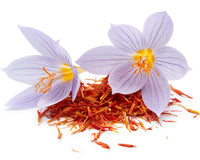Different Types of Rice and Their Nutrition Value
Rice is the most important staple food for people across the globe. It is used in many cuisines and dishes worldwide. Therefore, it is important to know the various types of rice so that you can choose the best for your dish. Various rice varieties are available in the market, and every variety has its own properties.

So, let’s explore the types of basmati rice and other rice grains!
#1 Basmati Rice
Basmati Rice is the king of all rice known, especially for its taste, aroma and long size. It is a long, slender-grained aromatic rice variety available in white and brown. The long grains of this rice variety are non-sticky and remain separated after cooking. It’s the perfect choice for biryani, pilaf, and curry.
So, if you want to impress your guests with fluffy, good-looking rice, try Basmati like Daawat Extra Long Basmati Rice. It is perfect for Indian, Chinese, mid-East, Mughlai, and Continental cuisines.
Here are the other famous types of basmati rice:
- Traditional Basmati Rice: Pure traditional basmati is long-grain rice grown in parts of India. The fragrance and texture of this rice type are remarkable.
- 1121 Basmati Rice: The 1121 Basmati Rice is the world's longest rice grain and is known for great cooking. The average length of this rice grain is 8.35 mm, which can be extended three times if cooked properly. It is also popular for its rich flavours and easy-to-digest feature.
- Pusa Basmati Rice: Pusa Basmati Rice is a hybrid basmati variety that offers a great aroma when cooked. Unlike other rice, Pusa Basmati doesn't get sticky after cooking.
- 1509 Basmati Rice: It brings you one of the most nutritious, deliciously musky long-grained varieties of basmati rice. Upon cooking, the grains exhibit great elongation and excellent fluffiness.
- 1401 Basmati Rice: 1401 is an improved hybrid Basmati rice variety. It has a delightful flavour and a tempting scent.
Nutrition Value per 100 g:
- Energy: 121kcal
- Fat: 0.38g
- Saturated Fats: 0.09g
- Monounsaturated Fats: 0.128g
- Polyunsaturated Fats: 0.122g
- Carbohydrates: 25.22g
- Sugar: 0.05g
- Fibre: 0.4g
- Protein: 3.54g
- Sodium: 126mg
- Cholesterol: 0mg
- Potassium: 32mg
#2 Black Rice Variety
Black rice is also famous as forbidden rice and is widely available in grocery stores. It tastes earthy and is a powerhouse of protein. Also, this rice variety contains anthocyanins, which is antioxidants and is best for health. It is a super-healthy and natural detoxifier that you can use to cook tasty meals. You can use the black rice for salad or garnish chicken recipes and soups.
Nutrition Value per 100 g:
- Calories: 173
- Protein: 5 grams
- Fat: 2 grams
- Carbohydrates: 38 grams
- Fibre: 3 grams
- Sugar: 1 gram
- Cholesterol: 0 milligrams
- Sodium: 4 milligrams
#3 White Rice
Varieties of white rice are divided into categories based on the length of the grain. There are long-grain, medium-grain, or short-grain white rice. You can use white rice for a wide range of dishes such as pulao, rice pudding, jeera rice, and more. The short-grain white rice is best for making dessert at home.
Nutritional Value per 100 g:
- Calories: 242
- Fat: 0.4g
- Sodium: 0mg
- Carbohydrates: 53.4g
- Fiber: 0.6g
- Sugars: 0g
- Protein: 4.4g
- Manganese:0.7mg
- Iron: 2.7mg
- Thiamin: 0.3mga
#4 Red Rice
With a nutty flavour and high nutrition content, red rice is the perfect variety to opt for if you are into weight loss. Doctors recommend this as a solution to people with mild symptoms of diabetes and high cholesterol. Along with being used for regular consumption, red rice also serves as a primary ingredient in south Indian cuisines.
It contains 20 per cent of the daily dose of magnesium, phosphorus, and molybdenum that an adult human body needs. Regular consumption of red rice can improve your nutritional needs and help reduce stress. The availability of antioxidants in red rice can protect the skin from premature ageing.
Nutritional Value per 100 g:
- Energy: 455 kcal
- Protein: 9.15g
- Carbohydrates: 102.12g
- Sugar: 0.53g
- Fat: 0.76g
- Saturated Fat: 0.159g
- Polyunsaturated Fat: 0.296g
- Monounsaturated Fat: 0.217g
- Cholesterol: 0mg
- Fibre: 1.6g
- Sodium: 655mg
- Potassium: 244mg
#5 Brown Rice
Brown rice is a whole grain and contains all parts of the rice grain — including the bran, germ, and endosperm. It is full of fibre and the nutrition your body needs. It is a healthier alternative for people suffering from gluten intolerance. The abundance of vitamins and minerals in brown rice can help keep your body healthy.
There are different types of brown rice, but basmati brown rice is the best to make delicious dishes. Basmati brown rice such as East End Brown Basmati Rice is the best option for biryanis and pulao. Also, you can use this rice to toss-up salads and stir-fry with veggies or meat.
Nutritional Value:
- Total Fat: 0.89g
- Saturated Fat: 0.179g
- Trans Fat- Polyunsaturated Fat: 0.321g
- Monounsaturated Fat: 0.325g
- Cholesterol: 0mg
- Sodium: 301mg
- Total Carbohydrate: 22.78g
- Dietary Fiber: 1.8g
- Sugars: 0.35g
- Protein: 2.56g
- Calcium: 10mg
- Iron: 0.42mg
- Potassium: 43mg
#6 Parboiled Rice
Parboiled rice is also famous as converted rice. It is partially precooked and common in parts of Asian and African countries. Parboiling is a process in which rice is soaked, steamed, and then dried. This turns the rice inside the husk into a slightly yellow colour.
Because the hull is left on for longer during the parboiling process, the grains absorb more nutrients such as vitamin B and potassium. The starch in these types of rice encourages the growth of healthy bacteria in your gut, which makes it best for digestion.
Nutrition Value per 100g:
- Calories: 194
- Total fat: 0.5 grams
- Total carbs: 41 grams
- Fiber: 1 gram
- Protein: 5 grams
Final Words
There are many rice recipes that you can try at home. Every recipe needs a different rice type. So, based on your need and taste choose the best rice types for your everyday meal or occasional dish. If you are looking for fluffy, long grain rice that is not sticky, then the basmati rice type is the best option.



